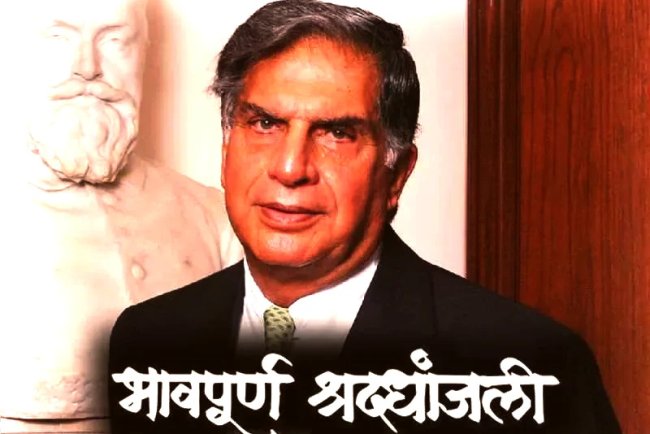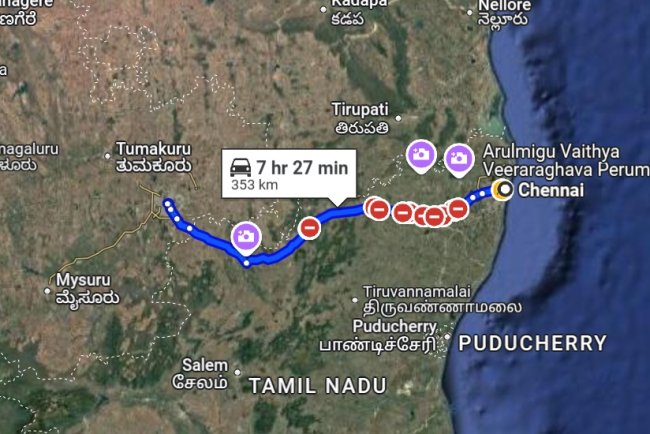The Delhi – Mumbai Expressway route is a project by the Indian Government with NHAI being part of it. The two capital cities New Delhi and Mumbai are known to be the financial hub and connect through the highways. The cities get the most modern developments and are marked as visionary projects. It is bound to be up to 12 lanes per traffic volume. The NHAI or National Highways Authority of India comes up with building and maintaining the Delhi-Mumbai expressway route. Sri PM Modi officially opened the Sohna – Dausa section at Delhi – Mumbai Expressway on February 12, 2023. The opening ceremony has the auspicious presence of Union Minister, V K Singh, Gajendra Singh Sekhrawat, and Nitin Gadkari. The public can easily access the stretch from February 14, 2023. The Delhi – Mumbai expressway is expected to be completed by October 2025. 82% of the construction is already completed for the project.

The expressway, which is under construction, is managed by NHAI and is part of the Bharatmala Yojana. It is being opened in phases, and the Sohna—Dausa stretch of the Delhi—Mumbai Expressway has been opened. Once the entire expressway is fully operational, the travel time between Delhi and Mumbai will reduce from 24 hours to 12 hours.
Delhi – Mumbai Expressway Facts:
The length of the project is up to 1350 km. It has an approximate cost of Rs 1,00,000 Crore. The project gives you 8 lanes which includes a separate lane that is for electric vehicles. It adds 12 lanes with expandable lanes. The project covers many states as Delhi, Haryana, and Rajasthan. It further connects to Madhya Pradesh and Maharastra. The start and end points for the highway are DND Flyway, Delhi, and Sohna in Haryana. It has an endpoint for Virar, Maharashtra, Jawaharlal Nehru Port Trust, Maharashtra. The date of completion for the project is October 2025. It has 8 entries and exit points between Delhi and Dausa. The maximum speed limit on this project is 120 km per hour.
Delhi – Mumbai Expressway Route:
The Delhi – Mumbai expressway route is with stretch of 1350 km. The eight-lane highway reduces travel time by up to half between India’s two most significant cities. The foundation stone for Delhi – Mumbai Expressway route is laid on March 9. 2019. The foundation stone was laid by Mr Nitin Gadkari the then Union Road transport and highways minister.

Mumbai to Delhi expressway routes pass through five states including Haryana for 129 km. It has Rajasthan with covering an area of 373 km, and Madhya Pradesh for 244 km. Gujarat has an area of 426 km, and Maharashtra for 171 km. It has more than 15,000 hectares of land used across five states that build the Delhi-Mumbai Expressway.
The expressway start point is from Delhi and further to Gurugram in Haryana. It passes through Jaipur and Sawai Madhopur in Rajasthan. The route passes through Ratlam in Madhya Pradesh and Vadodara in Gujarat. It further ends at Mumbai in Maharashtra. Delhi to Mumbai expressway perks up with connectivity to financial hubs such as Jaipur and further towards Ajmer, Kishangarh. It connects with Kota, Udaipur, and towards Chittorgarh, Bhopal, Ujjain. It is with immediate connectivity to Ahmedabad, Indore, and further towards Surat, Vadodara.
The project has 80 lakh tonnes of cement utilize with the project. It is said to connect with huge employment opportunities with thousands of skilled civil engineers working on project. It has more than fifty lakh personnel with expressway construction.
Route section for Delhi – Mumbai Expressway Routes:
Delhi – Mumbai expressway has four sections that include different states. It adds with route length and offers alignment for the same.
DND – Faridabad KMP that is up to 59 km.
Sohna – KMP – Vadodara has stretch of up to 844 km.
Vadodara – Virar is up to 354 km.
Virar – JNPT is up to 92 km.
The total area for the project is 1350 km.
Delhi – Mumbai Expressway Section 1: DND - Faridabad – KMP Route: 59 km with 9 km in Delhi and up to 50 km in Haryana.
Delhi – Mumbai Expressway starts from Delhi – Noida Driveway with DND Flyway in Delhi and further passes through places like Okhla, Shaheen Bagh, and Kalindi Kunj. Sohna in Haryana has an entry/exit point. The traffic that heads from both entry and exit points gets merged at KMP Expressway in Nuh, Haryana. It further moves towards Vadodara and Mumbai. The project also connects with the upcoming Noida International airport at Jewar. The link road further leads to Faridabad Ballabgarh bypass and DND Flyway.

Delhi – Mumbai Expressway Section 2: Sohna – KMP – Vadodara Route is 845 km. It comes with 79 km within Haryana. In Rajasthan it covers an area of 373 km, Madhya Pradesh has a total stretch of 244 km, and 149 Km is within Gujarat.
Section two of the Delhi – Mumbai Expressway connects with Haryana state. It adds with Alipur village, Sohna, and Sancholi village. In Nuh district, it connects with Bhiawati and Khalilpur. Naurangabad, East of Ujina, east of Bhadas. West of Pinangwan. East of Firozpur Jhirka and Kolgaon village. It further passes towards the state of Rajasthan and covers up to Naugaon village within the Alwar district. It connects towards Rajgarh – Madawar road, East of Dausa. It connects towards South–West of Lalsot, South–West of Sawai Madhopur, East of Indragarh (Bundi), East of Kota, and East of Rawatbhata.
Read About The City Project :
Delhi – Mumbai Expressway Section 3: Vadodara – Virar Route with a stretch of 356 km. It covers an area of 277 km in Gujarat and 79 km in Maharashtra.
Section 3 of the Delhi – Mumbai expressway covers various places within Gujarat. It includes Dodka Village, Fajapur Village, Samiyala, and Laxmipura Village. It adds with Dehgam village, Moti Naroli village, East of Navsari and towards East of Valsad. The section covers some of the areas in Maharashtra and within the Gujarat – Maharashtra border. It ends towards part of Virar, Palghar.

Delhi – Mumbai Expressway Section 4 : Virar – JNPT Route which is up to 92 km I Maharashtra
Section four of the Mumbai – Delhi Expressway includes various places in Maharastra. It adds to areas such as Virar, Amane, and towards Badlapur. The expressway further ends at JNPT, Mumbai.
Celebrity Also Read :
Conclusion
It comes as one of the largest highways that connects with Delhi – Mumbai Expressway. It connects and enhances road connectivity between different Indian states. Union Government has decided to connect with the expressway to Agra – Gwalior Greenfield Expressway in Kota. Agra – Gwalior Greenfield Expressway will also connect with Bundelkhand Expressway in Etawah and towards Agra Expressway in Lucknow. Connectivity towards Agra – Gwalior Greenfield Expressway to Delhi – Mumbai Expressway reduces travel time between Delhi and Gwalior to four hours. The road and transport ministry has approved an expressway between Chennai and Surat that connects towards Delhi – Mumbai Expressway at Surat.



















